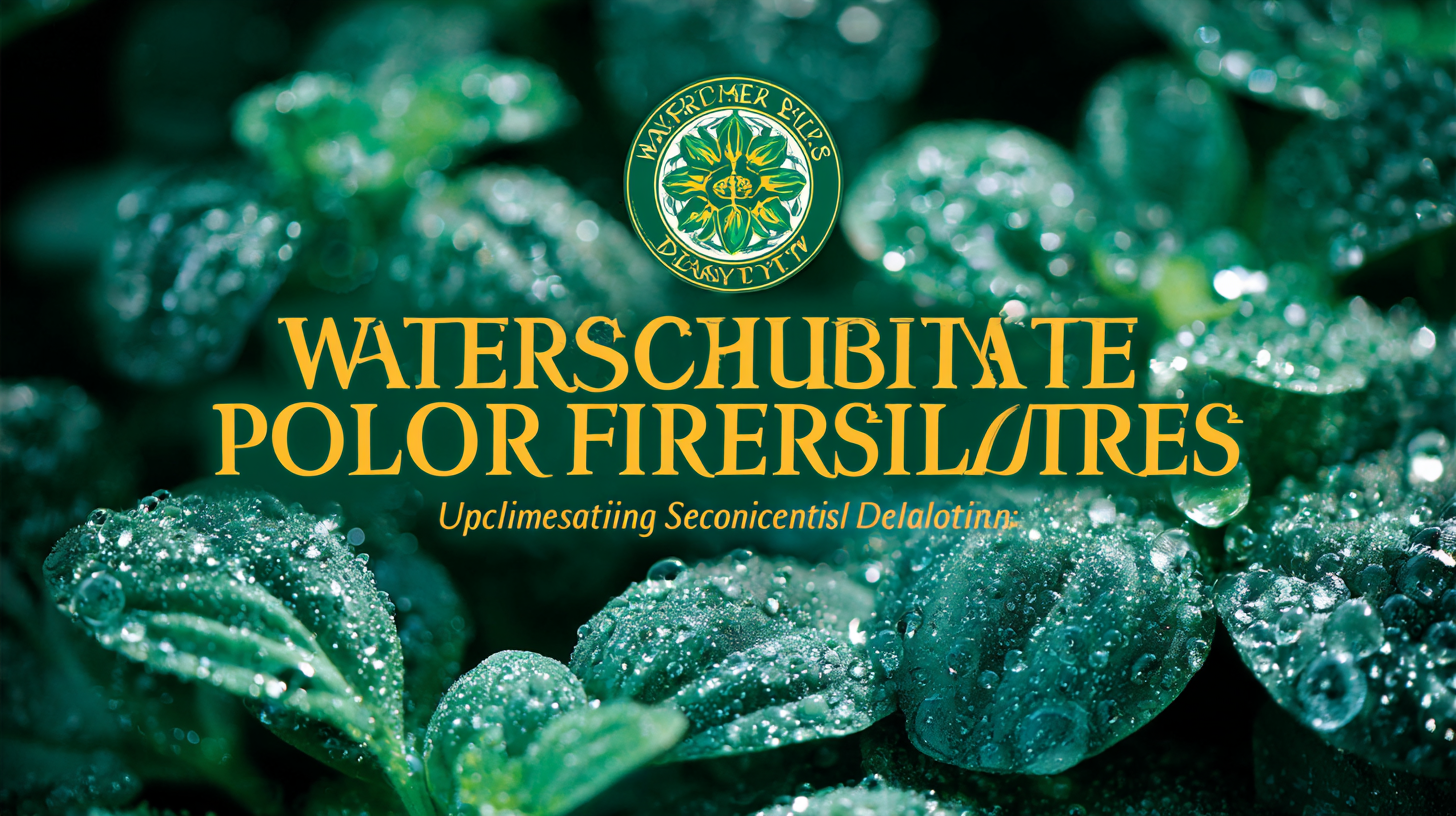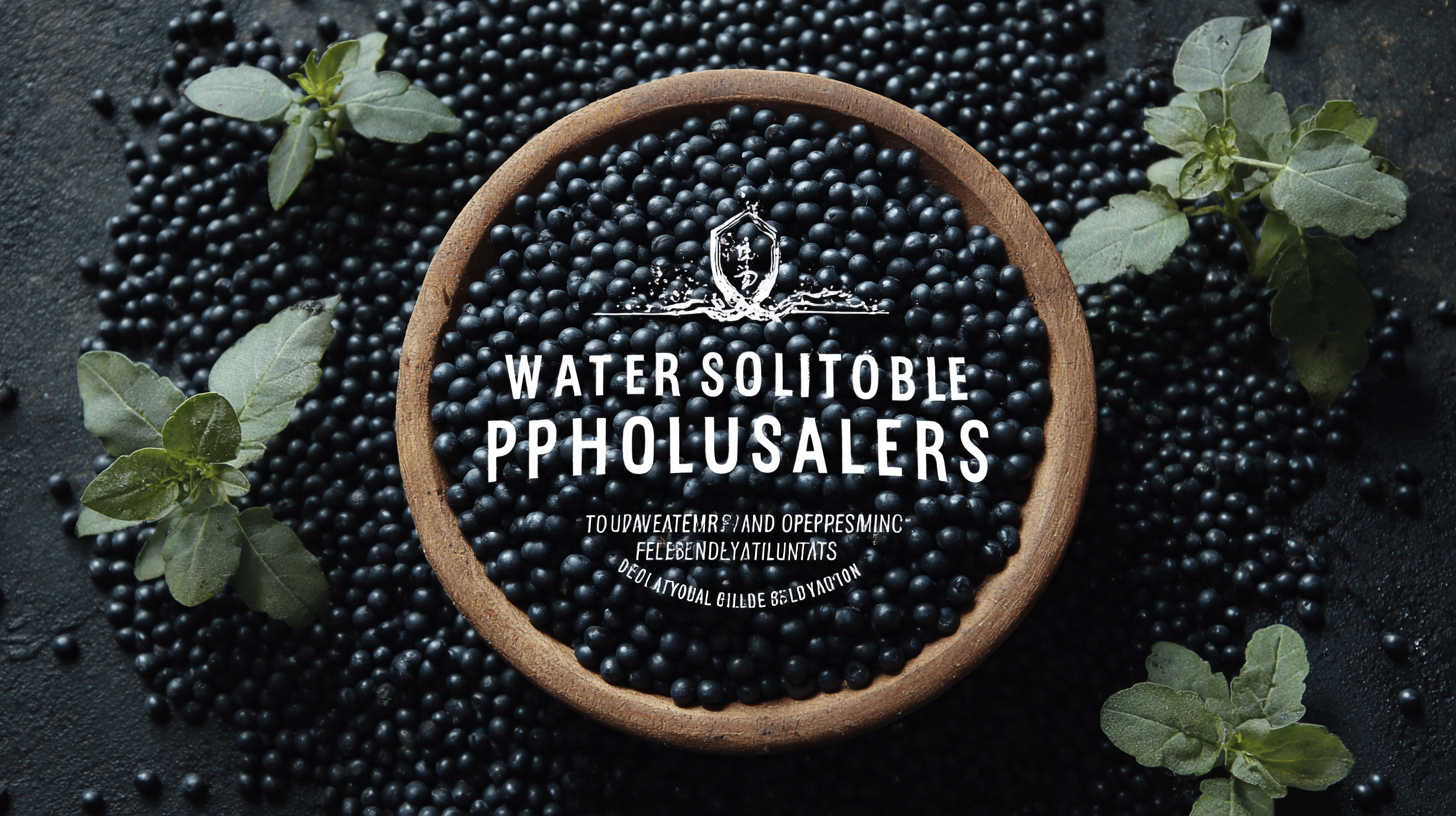The agricultural sector is continuously evolving, with a growing emphasis on enhancing crop yields and sustainable farming practices. A pivotal element in this transformation is the use of Water Soluble Phosphatic Fertilizers, which have gained traction due to their high nutrient availability and efficiency in plant uptake. According to a recent market report by Grand View Research, the global market for water-soluble fertilizers is projected to reach USD 15.78 billion by 2025, growing at a CAGR of 12.8%. This surge is driven by an increasing demand for high-quality food products and the need for efficient nutrient management in modern agriculture. Moreover, the precision application of these fertilizers can lead to improved soil health and reduced environmental footprints, making them a vital component in achieving sustainable agricultural practices. In this blog, we will unveil the comprehensive technical specifications of premium Water Soluble Phosphatic Fertilizers, exploring their formulation, benefits, and role in advancing agricultural productivity.

Premium water soluble phosphatic fertilizers play a pivotal role in modern agriculture, primarily due to their ability to enhance plant growth effectively. Unlike traditional fertilizers, which may release nutrients slowly, these specialized fertilizers provide an immediate source of phosphorus—an essential nutrient for plants. Phosphorus is crucial for energy transfer, photosynthesis, and the formation of nucleic acids. As a result, the application of water soluble phosphatic fertilizers ensures that crops receive the necessary nutrients at critical stages of growth, leading to higher yields and better quality produce.
Furthermore, the importance of these fertilizers extends beyond mere plant health. They contribute to more sustainable agricultural practices by reducing nutrient runoff into water bodies, which can lead to pollution and eutrophication. Since they are designed for fast absorption, using premium water soluble phosphatic fertilizers minimizes waste and maximizes efficiency. This not only supports farmers in achieving their yield goals but also aligns with environmental stewardship efforts. Therefore, understanding and utilizing these fertilizers is vital for both agricultural productivity and the health of our ecosystems.
The demand for high-quality water-soluble fertilizers is rapidly increasing, particularly in southern China. As the agricultural sector transitions towards high-quality development, the unique attributes of premium water-soluble phosphatic fertilizers have become crucial. These fertilizers not only provide essential nutrients but also enhance crop yield and quality due to their superior solubility, enabling rapid absorption by plant roots. The integration of vital elements, such as phosphorous, features prominently in formulations that ensure optimal growth conditions.
Furthermore, the current landscape of specialty fertilizers highlights an evolving market, with increasing interest in the technology-enhanced MAP (Monoammonium Phosphate). The rise in water-soluble fertilizer consumption is also influenced by their application in innovative sectors, including LFP (Lithium Iron Phosphate) batteries. This trend underscores the significance of phosphatic fertilizers not just in traditional agricultural applications but also in emerging industries, showcasing their fundamental role in fostering sustainable agricultural practices while meeting diverse market demands.
| Specification | Details |
|---|---|
| Nutrient Composition | 20% Phosphorus (P2O5), 10% Nitrogen (N), 10% Potassium (K2O) |
| Solubility | 100% water-soluble at ambient temperature |
| pH Level | pH 6.0 - 7.0 (neutral) |
| Appearance | Fine crystalline powder |
| Microelements | Contains Iron, Manganese, Zinc, and Copper |
| Application Rate | 2-5 kg per hectare depending on crop needs |
| Packaging | Available in 1 kg, 5 kg, and 25 kg bags |
| Storage Conditions | Store in a cool, dry place away from sunlight |
| Shelf Life | 24 months from the date of manufacture when stored properly |
In recent years, China's advanced manufacturing sector has witnessed remarkable transformations fueled by
innovative processes and technological advancements. Leading factories specializing in premium water-soluble phosphatic fertilizers are at the forefront of
this evolution, incorporating artificial intelligence and automation to streamline production.
These facilities exemplify the principles of the Global Lighthouse Network, where advanced manufacturing meets
sustainability and efficiency. The adoption of AI not only enhances productivity but also facilitates precision in
meeting the specific nutritional needs of crops, promoting better agricultural outcomes.

In the realm of modern agriculture, the demand for efficient and effective fertilizers is on the rise, leading to a significant focus on water-soluble phosphatic fertilizers. These fertilizers not only offer rapid nutrient availability but also align with sustainable farming practices. A comparative analysis of global water-soluble fertilizer standards reveals notable variations that can impact agricultural productivity and environmental sustainability.
Various countries have established their own regulations and benchmarks for water-soluble fertilizers, reflecting differing agricultural practices and environmental considerations. For instance, European standards typically emphasize the reduction of heavy metals and contaminants, while regions like North America are more inclined to focus on the nutrient profile and performance metrics. By understanding these divergent standards, farmers and agribusinesses can make informed choices about their fertilizer applications, ensuring compliance while maximizing crop yields.
Moreover, this comparative analysis underscores the importance of harmonizing standards across borders. As global trade in agricultural products increases, uniform standards may facilitate better resource management and improve the overall quality of fertilizers. This evolution could lead to enhanced cooperative practices, ultimately benefiting both farmers and the environment in a world that increasingly prioritizes sustainable agriculture.
The use of premium water-soluble phosphatic fertilizers plays a crucial role in promoting
sustainable agriculture, particularly in the context of growing global food demands and environmental concerns. Recent industry
reports indicate that the organic fertilizers market is projected to expand significantly, from $14.70 billion in
2024 to an anticipated $38.57 billion by 2033. This surge highlights the increasing recognition of sustainable fertilizers
as essential for enhancing soil health and boosting crop yields, supporting the transition towards
environmentally friendly farming practices.
Furthermore, innovative practices such as the use of human urine as fertilizer exemplify the trend towards sustainable urban agriculture.
This approach not only recycles valuable nutrients but also reduces environmental waste, offering a compelling solution for urban farmers.
In Zambia, the strategic initiatives between agricultural organizations aim to propel sustainable practices, underscoring the growing
global commitment to agriculture that prioritizes ecological balance. As farmers shift towards
regenerative systems, they stand to benefit significantly, with reports suggesting a
15-25% return on investment, showcasing the economic viability of sustainable agricultural practices.

